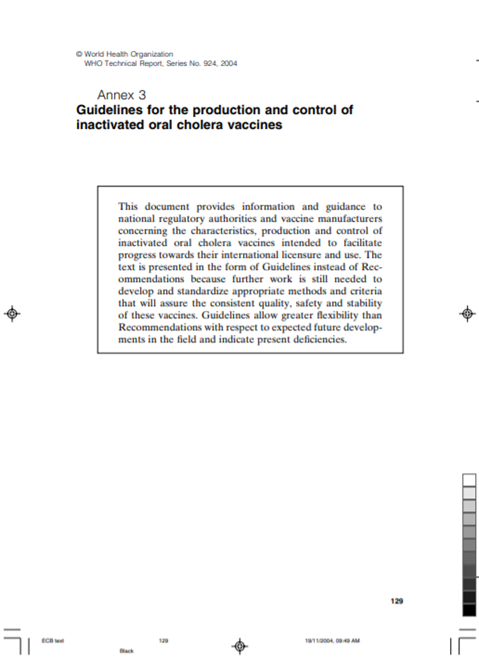Guidelines for the production and control of inactivated oral cholera vaccine, Annex 3, TRS No 924

Overview
A parenterally administered, killed whole-cell cholera vaccine has been widely available for many years. The WHO Requirements for this vaccine were first adopted in 1959 and revised in 1968 (1); an addendum was incorporated in 1973 (2). However, this vaccine offers at best only limited protection of short duration and produces unpleasant side-effects in many vaccinees. In view of these limitations, the vaccine has not been considered satisfactory for general public health use, and in 1973 the twenty-sixth World Health Assembly abolished the requirement in the International Health Regulations for a certificate of vaccination against cholera.
Considerable progress has been made during the past decade in the development of a new generation of oral vaccines against cholera. These have already been licensed in some countries and are now being considered for wider public health application (3). Two distinct types of oral cholera vaccine have been developed; those consisting of live attenuated bacteria and those consisting of killed (inactivated) bacterial cells. In some cases, the latter are combined with the purified recombinant DNA-derived B-subunit of the cholera toxin. These positive developments have led to a need for international guidance to assure the quality and safety of this new generation of cholera vaccines. The present guidelines apply only to inactivated oral cholera vaccines.
Full version of the WHO Technical Report Series N° 924
